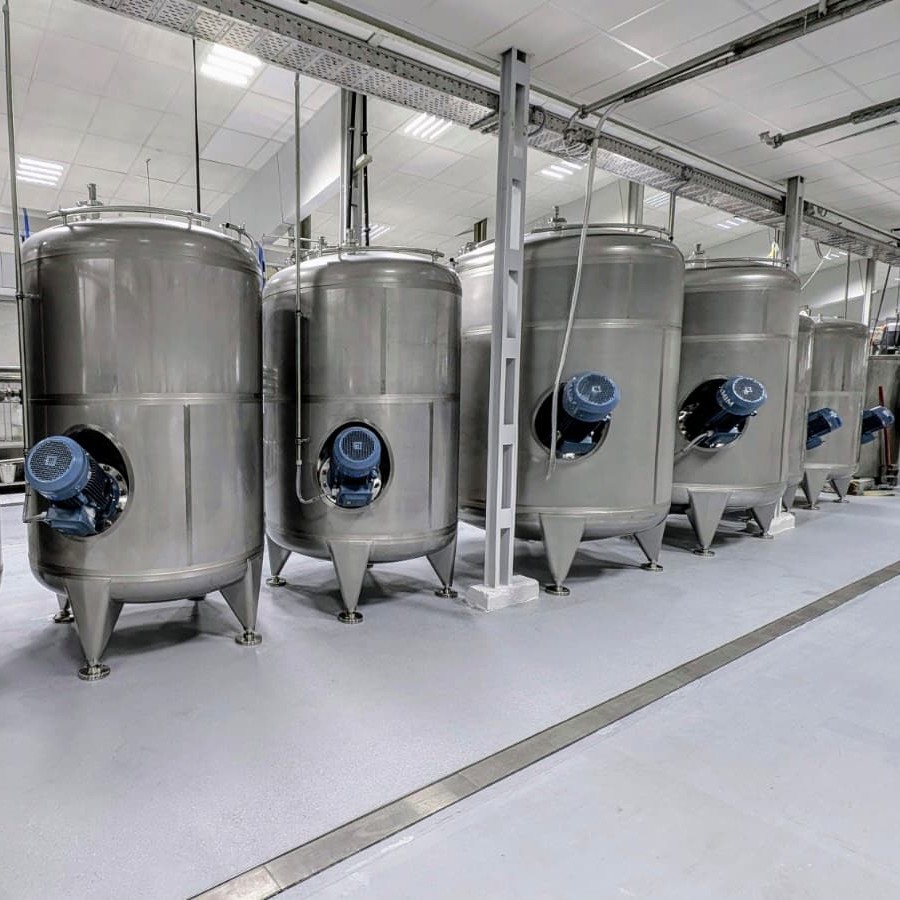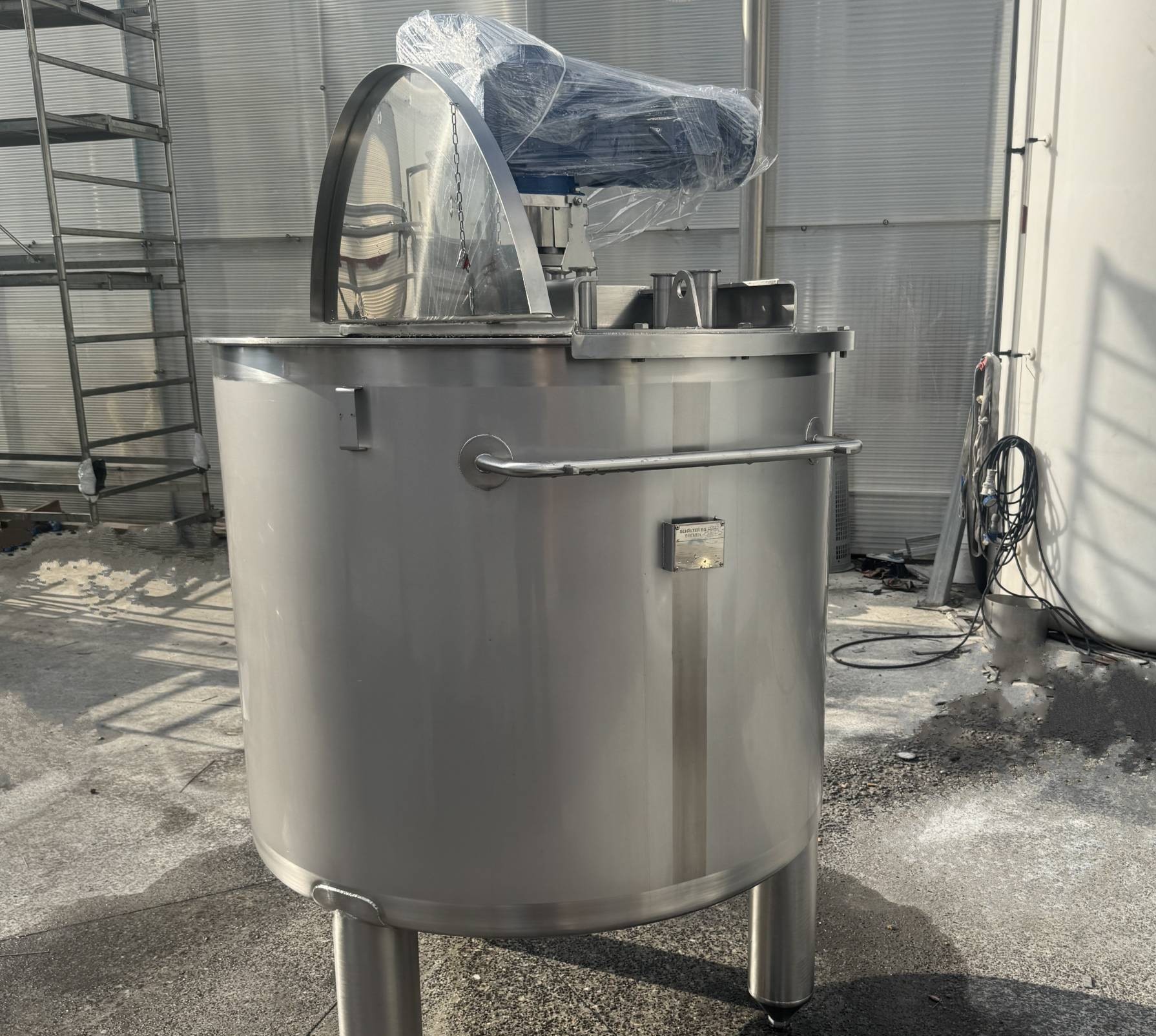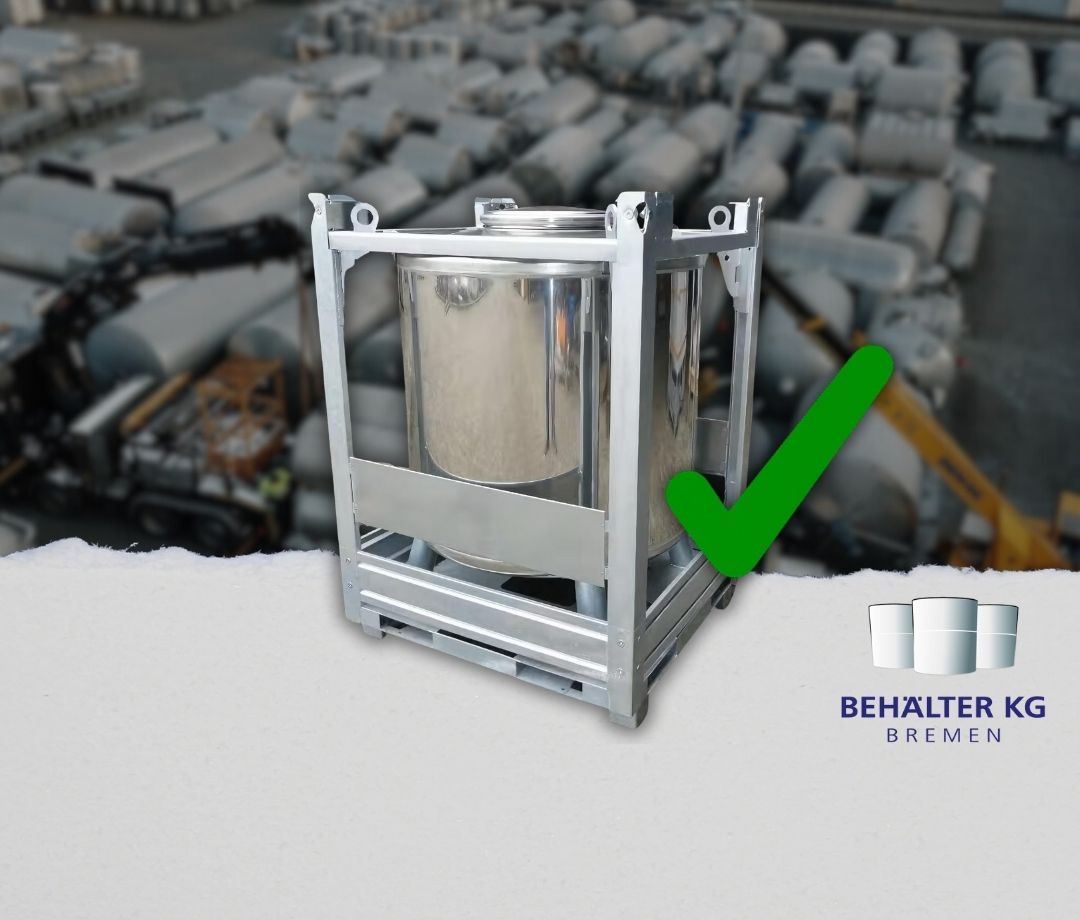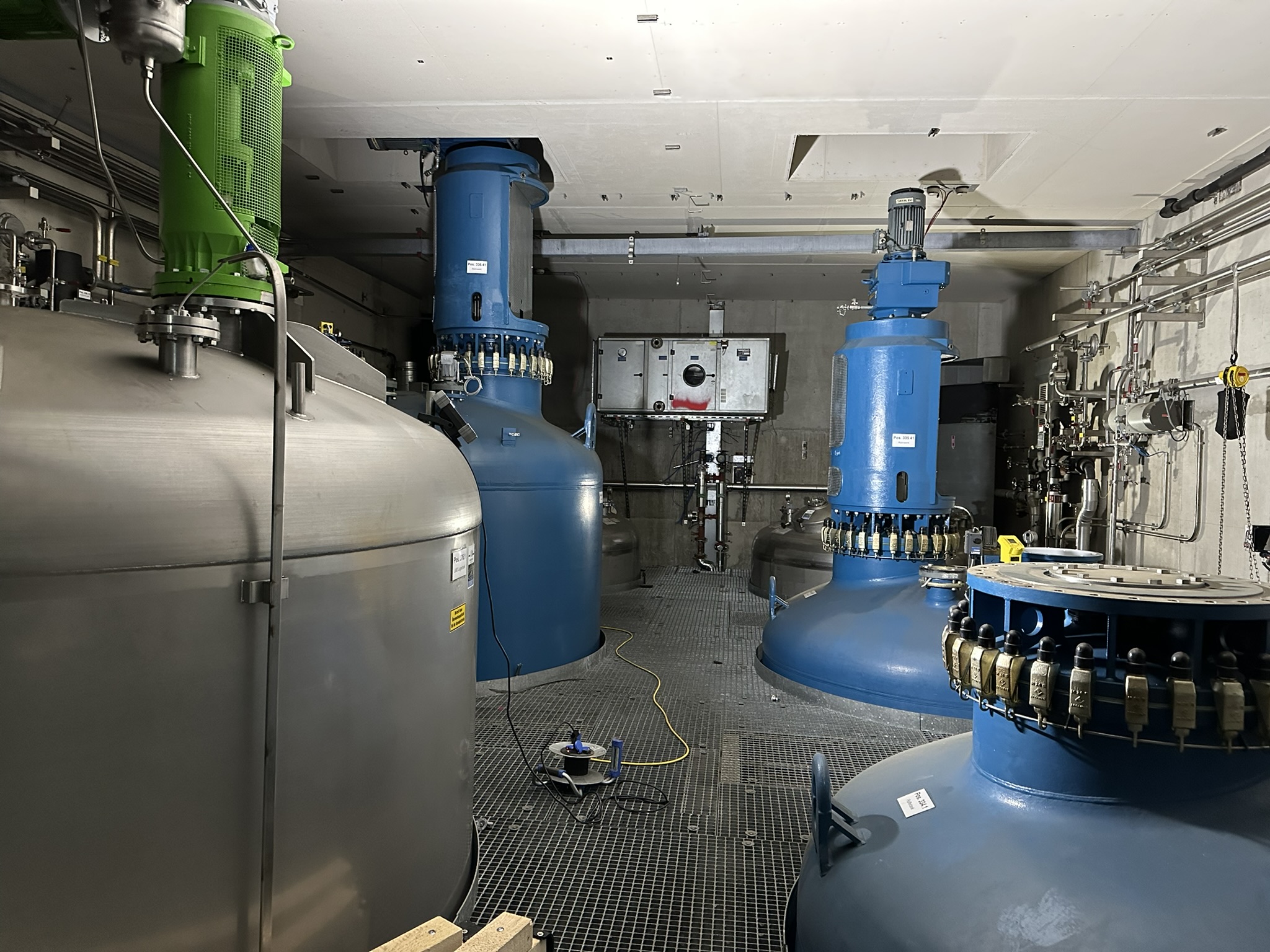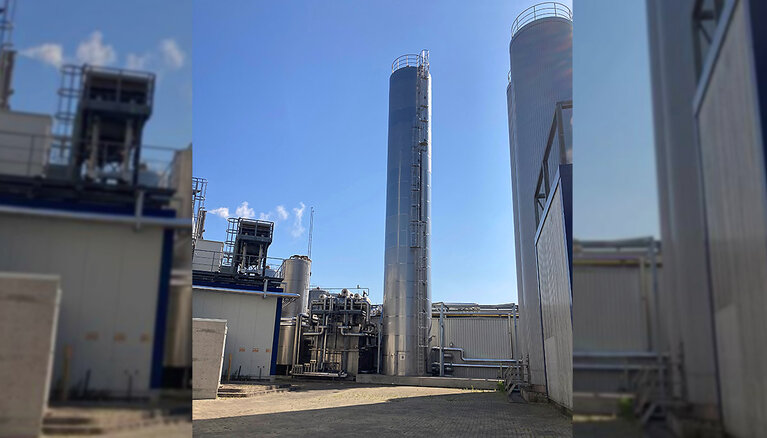Overview of stainless-steel grades for tanks & vessels
Stainless steels have been an integral part of vessel and plant construction since the early 20th century. The most common grades used in this field belong to the stainless steel groups stainless steel 304 and stainless steel 316, which are explained in more detail in the following article.
The designations go back to historical test series: The “V” stands for Versuch (experiment), the “A” for Austenite. Stainless steel 304 consists of chromium and nickel, while stainless steel 316 has molybdenum as an additional alloying element to increase corrosion resistance. Other elements can be added to improve properties such as ductility or temperature resistance.
In practice, stainless steel vessels are often made from a combination of both groups – for example, stainless steel 316 for all product-contact parts and stainless steel 304 for structural elements such as legs or lifting lugs. The reason is simple: highly alloyed grades are significantly more expensive and are therefore used specifically where their properties are technically required.
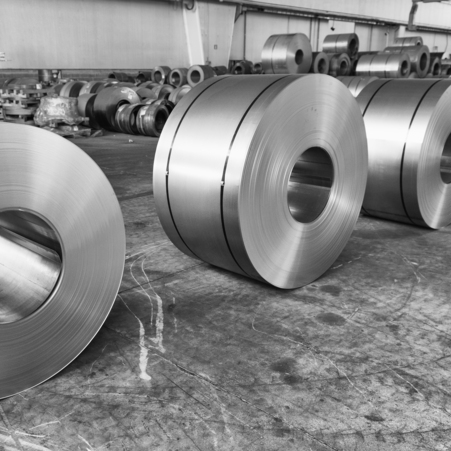
Selected stainless steels of the stainless steel 316 group
stainless steel 316 is the upgraded version of stainless steel 304: thanks to around 2% molybdenum addition, corrosion resistance increases significantly—especially against chlorides in seawater or salts. stainless steel 316 also offers clear advantages against other media such as sulfuric acid. In addition, heat resistance is higher than with stainless steel 304.
Commonly used materials
The most widespread materials are 1.4401 and 1.4404. Both deliver high corrosion resistance and are proven in demanding applications such as chemical processing or the food industry. 1.4404 has a slightly lower carbon content and is therefore marginally more resistant and temperature-resistant in specific applications. In everyday use, the properties of both materials are largely identical.
Special variants
A popular subgroup is 1.4571, which additionally contains titanium. This offers advantages when strength at high temperatures is required. Corrosion resistance corresponds to that of 1.4401/1.4404.
1.4435 was developed specifically for medical and pharmaceutical applications. The increased molybdenum and nickel content significantly improves resistance to pitting.
- 1.4429 – very good corrosion resistance
- 1.4439 – highly resistant, even at high chloride concentrations
- 1.4539 – up to 5% molybdenum, extremely corrosion-resistant, significantly more expensive than standard stainless steel 316
Materials of the stainless steel 316 group
| Material No. | International | Special feature |
|---|---|---|
| 1.4401 | AISI 316 | Increased corrosion resistance & forgeability, widely used across demanding industries (pharma, chemical, food) |
| 1.4404 | AISI 316 L | Increased corrosion resistance & forgeability, widely used across demanding industries (pharma, chemical, food) |
| 1.4571 | AISI 316 Ti | Increased corrosion resistance, particularly well suited for high temperatures |
| 1.4435 | AISI 316 L | Higher molybdenum content increases corrosion resistance; used primarily in pharma/medical sectors |
| 1.4429 | AISI 316 LN | Very good corrosion resistance |
| 1.4439 | AISI 317 LMN | Very good corrosion resistance, even at high chloride concentrations |
| 1.4539 | AISI 904 L | For highly corrosive media such as phosphoric or hydrochloric acid, high resistance to pitting and stress corrosion cracking |
Special materials & alloys
For extreme conditions, there are rare special materials such as 1.4529 (Alloy 926) with 6.5% molybdenum—ideal against pitting and crevice corrosion. Under the brand name Hastelloy, highly corrosion-resistant alloys with up to 30% molybdenum are also offered, which are particularly resistant to highly concentrated hydrochloric acids.
Selected stainless steels of the stainless steel 304 group
stainless steel 304 includes all chromium-nickel steels, primarily the material 1.4301. It is the most widely used stainless steel in vessel construction and accounts for over 50% of the total market.
Special subgroups
A rarer variant is 1.4307, which contains slightly less carbon. This results in slightly increased resistance to intergranular corrosion—with virtually identical mechanical properties to 1.4301.
1.4541 is also widespread; it is stabilized by an addition of titanium. This increases corrosion resistance, especially at low concentrations of chlorides, salts, or nitric acid.
Areas of application & limitations
stainless steel 304 is used across industries: in the food industry, the chemical and pharmaceutical industries, construction, and automotive engineering. One disadvantage of 1.4541, however, is that it is not suitable for polishing and is therefore often not used in particularly demanding pharmaceutical applications.
Materials of the stainless steel 304 group
| Material No. | International | Special feature |
|---|---|---|
| 1.4301 | AISI 304 | Very good weldability, good corrosion resistance, the most common stainless steel material across industries |
| 1.4307 | AISI 304 L | Slightly increased corrosion resistance, unchanged mechanical properties |
| 1.4541 | AISI 321 | Increased resistance due to titanium addition as a stabilizer |
Sie möchten mehr zu dieser Leistung erfahren?
Sprechen Sie uns an.